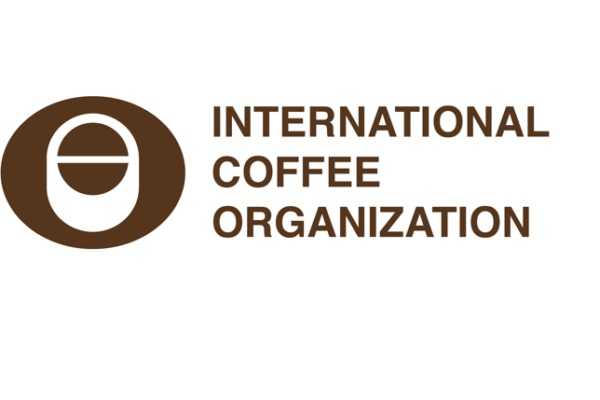LONDON, UK – The International Coffee Organization (ICO) released its November market report yesterday evening, with updated statistics on prices, exports and estimates on production and consumption. The figures show a further surge in green coffee prices. The monthly average of the Ico composite indicator price (I-CIP) rose by 8% to a record 270.72 cents in November.
Double-digit price increases were recorded for all Arabicas groups: Colombian Milds, Other Milds and Brazilian Naturals saw their monthly averages rise by 10.5%, 10.2% and 11.6% respectively to 306.21, 304.98 and 285.59 cents.
More contained (+1.9%) was the appreciation of the Robusta indicator, which reached at a new high of 226.11 cents. New York and London rose by 10.5% and 3.5% to 277.04 and 214.43 cents respectively.
The I-CIP posted a median value of 269.74 US cents/lb and fluctuated between 241.49 and 310.69 US cents/lb.
The November 2024 I-CIP is above the November 2023 I-CIP by 67.6%, with the 12-month rolling average at 219.02 US cents/lb (whereas the November 2023 I-CIP was 161.53 US cents/lb).
The Colombian Milds and Other Milds increased by 10.5% and 10.2%, reaching 306.21 and 304.98 US cents/lb, respectively, in November 2024. The Brazilian Naturals also appreciated, increasing by 11.6% to 285.59 US cents/lb in November 2024. The Robustas grew 1.9% to 226.11 US cents/lb. The New York ICE market was the main driver of growth, increasing by 10.5% and reaching 277.04 US cents/lb, whereas the London ICE market grew 3.5%, averaging 214.43 in November 2024.
The I-CIP reached new highs in November 2024 and achieved the highest monthly average since 277.41 US cents/lb (nominal prices) in May 1977. There were several sources of pressure that continued pushing up the prices throughout the month:
Central America was hit by Tropical Storm Sara, which caused significant devastation from Guatemala to Panama. Sara first made landfall on 14 November, close to the Honduras-Nicaragua border, and although the storm weakened and dissipated by 17 November, intense precipitation continued to affect the region.
According to a report by the United Nations Office for the Coordination of Humanitarian Affairs (OCHA), rainfall levels were comparable to those registered in 2020 during Hurricanes Eta and Iota. Furthermore, it was reported that Sara caused heavy rainfall, resulting in landslides and floods, in addition to damage to road infrastructure, sanitation systems and electricity services.
Coffee-growing regions impacted by the storm could see coffee crops suffer from leaf and fruit drop, fruit fermentation inside coffee mills, death of roots, anthracnose, low nutrient absorption, mineral leaching, uneven ripening and delayed ripening due to low solar radiation. These factors could lower the yield per hectare for the Central American countries in question and could also lead to potential short-term disruptions to logistical processes.
Adding to pressure on the supply of coffee was the release of a report from the US Department of Agriculture on 19 November, which forecasted that coffee production in Brazil would go down by around 5%, or 3.5 million bags, for the current coffee year. Furthermore, the harvest in Vietnam is behind schedule because of bad weather hampering the Robustas harvest. Additionally, there are continued shipment delays in South America’s largest port, Santos, Brazil, due to the lack of adequate port infrastructure and availability of containers. The combination of ongoing geopolitical conflicts in the Red Sea and low water levels in the Panama Canal caused by dry climatic conditions has adversely affected global coffee supply chains.
Uncertainty over the outcome of the EU legislative process continued applying a positive pressure on prices throughout November. On 14 November 2024, the European Parliament voted to approve the proposed one-year delay to the implementation of the EU Deforestation Regulation. However, between 25 and 27 November, proposed amendments, including the postponement of the legislation, were further examined trilaterally between the European Council, the European Commission, and the European Parliament. By 27 November, the European Council approved the proposal to postpone. The European Parliament voted in favour and also included other material changes, including the introduction of a “no-risk” category for countries. On Tuesday 3 December, negotiators from the Parliament and Council reached a provisional political agreement to postpone the application of the new rules. Large operators and traders will now have to respect the obligations of this regulation as of 30 December 2025, and micro- and small enterprises from 30 June 2026. For these changes to enter into force, the agreed text will have to be endorsed by both the Council and Parliament and published in the EU Official Journal. To this end, ICE Futures Europe has made some amendments to their Robusta Coffee Futures Contract in response to the European Parliament’s vote to amend the EUDR
The Colombian Milds–Other Milds differential grew from 0.28 to 1.24 US cents/lb between October and November 2024. The Colombian Milds–Brazilian Naturals differential contracted by 3.0% to 20.62 US cents/lb, whilst the Colombian Milds–Robustas differential expanded by 45.2% from October to November 2024, averaging 80.10 US cents/lb. Meanwhile, the Other Milds–Brazilian Naturals and Other Milds–Robustas differentials moved by -7.6% and 43.7% to 19.38 and 78.87 US cents/lb, respectively. The Brazilian Naturals–Robustas differential grew by 75.4%, averaging 59.48 US cents/lb in November 2024.
The arbitrage, as measured between the London and New York futures markets, expanded 43.9% to 62.60 US cents/lb in November 2024, marking its highest point in 11 months. This sharp trend reversal is mainly due to the Arabicas growing at a much faster pace than the Robustas.
The intra-day volatility of the I-CIP contracted by 1.5 percentage points, averaging 9.5% in November 2024. The Colombian Milds’ volatility decreased by 1.5 percentage points. The Other Milds’ volatility shrank by 1.5 percentage points to 9.9% while the Brazilian Naturals followed the same downtrend, losing 1.6 percentage points and averaging 10.5% in November 2024. The Robustas’ volatility contracted to 10.1% for the month of November, a 1.3 percentage point decrease. Lastly, New York’s volatility decreased by 1.7 percentage points to 11.0% while the London futures market’s volatility also decreased by 1.5 percentage points to 12.0%.
The London certified stocks of Robusta coffee declined by 1.8% from October to November 2024, closing the month at 0.65 million bags. Certified stocks of Arabica coffee followed the opposite trend, going up to 0.95 million 60-kg bags, a 4.6% increase versus October 2024.
Exports by Coffee Groups – Green Beans
Global green bean exports in October 2024 totalled 9.95 million bags, as compared with 8.6 million bags in the same month of the previous year, up 15.8%. This was the twelfth consecutive month of positive growth. The Robustas and Brazilian Naturals were the two main groups responsible for the overall strong growth seen in October 2024, accounting for 74.1% of the 1.36 million bag net growth from October 2023 to October 2024.
Exports of the Colombian Milds increased by 23.5% to 1.14 million bags in October 2024 from 0.92 million bags in October 2023. This was the thirteenth consecutive month of positive growth for this group of coffee. All three origins (Colombia, Kenya and Tanzania) of the group made positive contributions to the double-digit growth rate, with Kenya and Tanzania’s exports more than doubling, rising by 192.0% and 109.5% to 83,500 bags and 96,000 bags, respectively.
Shipments of the Other Milds increased by 9.7% in October 2024 to 1.52 million bags from 1.39 million bags in the same period last year. Ethiopia, Mexico and Peru were the three main drivers of the group’s October growth in exports, with a combined net increase of 0.18 million bags, contributing 135% to the 0.13 million bag net growth of the Other Milds. Guatemala, Papua New Guinea and Uganda were the main drivers of negative growth, with a net decrease of 70,184 bags, resulting in the total October 2024 expansion of the Other Milds going down by 52.1%.
Green bean exports of the Brazilian Naturals increased in October 2024, rising by 12.1% to 4.18 million bags from 3.72 million bags in October 2023. This was the first time the exports of this group of coffee have risen above the 4.0 million bags level, which in turn were driven by Brazil, the largest producer and exporter of the Brazilian Naturals, and Ethiopia. Brazil exported 3.65 million bags in October 2024, up 8.1% as compared with 3.38 million bags of Brazilian Naturals exported in October 2023.
Green bean exports of the Robustas were up 21.6% to 3.11 million bags in October 2024 from 2.56 million bags in October 2023. The main drivers of October’s double-digit growth rate were Brazil and Indonesia, whose combined exports were up 46.3% at 1.52 million bags as compared with 1.04 million bags in October 2023.
The two origins accounted for 86.7% of the net gain made by the Robustas in October 2024. The magnitude of the growth rate, however, was due the base effect of a 7.9% fall in October 2023, when only 2.56 million bags were exported. As a comparison, the average October exports level for 2018-2022 was 2.91 million bags. As a result, the Arabicas’ share of total green bean exports decreased to 68.7% in October 2024 as compared with 70.2% in October 2023.
Exports by Regions – All Forms of Coffee
Exports of all forms of coffee from Asia & Oceania increased by 15.2% to 2.49 million bags in October 2024. The expansion was mainly driven by Indonesia, with the origin’s exports increasing by 42.0% to 1.05 million bags as compared with 0.74 million bags in October 2023, now marking fourth successive months of growth. The impetus for the expansion was grounded on the new supply from coffee year 2024/25 becoming available. In general, Indonesia starts with an Arabicas harvest in West Java, followed by East Java and Sulawesi.
Later, in May, the Robustas harvest begins in southern Sumatra, which is joined by Java in June and by Flores in July. In July and August, Flores commences its Arabicas cherry picking, and finally North Sumatra and Aceh begin to gather their crops in October.
Vietnam, Asia & Pacific’s largest producer and exporter of coffee, started the new coffee year in a similar way to how it had ended the last coffee year, with its exports up at 3.3% following a 0.1% increase in September 2024. The two consecutive months of positive growth for Vietnam could be a sign that the origin’s downturn in exports has bottomed out following seven straight months of negative growth. However, the recovery of exports, which is expected to start with the arrival of new supply from the coffee year 2024/25 harvest, may be “U” shaped instead of “V” shaped. On 21 November, the harvest was reported as 20% completed.
Exports of all forms of coffee from Africa increased by 31.9% to 1.46 million bags in October 2024 from 1.11 million bags in October 2023. Ethiopia was the main driving force behind the region’s growth in October 2024, with the origin’s exports having increased by 62.4% to 0.6 million bags as compared with 0.37 million bags in October 2023.
This marked 11 months of consecutive growth for Ethiopia, and like for the first 10 months of said growth, the explanation for the eleventh month’s expansion in exports largely appears to be a result of the resolution of logistical/contractual issues from coffee year 2022/23 i.e. a base effect. The growth rate was clearly in the high double digits, averaging 93.2% from December 2023 to October 2024. However, the absolute volume of exports suggests there was an additional factor at play. Between January and October 2024, the monthly average exports were 0.53 million bags, the highest on record for the first 10 months of a calendar year, as compared with an average monthly 0.38 million bags between January and October 2021, the previous record volume.
Throughout coffee year 2021/22 the coffee prices were affected by positive price pressure, with the Other Milds averaging 264.04 US Cents/lb for the year as compared with 178.97 US Cents/lb in coffee year 2020/21. This, along with other internal factors, had encouraged domestic coffee buyers to purchase cherries at elevated prices. However, in October 2022, the positive price pressure ended, with the Other Milds falling to 213.85 US Cents/lb. By the end of coffee year 2022/23, the price of the Other Milds had fallen to 183.52 US Cents/lb. These coffee beans, at least one year old, are now being released, encouraged by higher prices.
In October 2024, South America’s exports of all forms of coffee increased by 12.4% to 6.69 million bags. These are the largest monthly exports on record, surpassing the previous highest volume of 6.57 million bags, shipped in November 2020. Brazil, once again, was the main source of the strong positive growth of the region, which saw its exports increase by 13.2% in October 2024 to 4.94 million bags from 4.37 million bags in October 2023. Mirroring the region, Brazil’s October 2024 exports were also the largest exports on record for the origin, beating the old record of 4.77 million bags, shipped in November 2020. Colombia was another significant factor in the region’s double-digit growth rate, its exports increasing by 15.0% to 1.05 million bags in October 2024 from 0.91 million bags in October 2023. The rise in exports was fuelled by the equally sharp growth in production, which was up 15.7% in October 2024 at 1.34 million bags as compared with 1.16 million bags in October 2023.
In October 2024, exports of all forms of coffee from Mexico & Central America were up 8.8% to 0.5 million bags, as compared with 0.46 million in October 2023. Mexico was the main positive driver of the region’s exports, its exports up 27.2% to 0.24 million bags from 0.19 million bags in October 2023. The origin had accounted for 125.8% of the region’s net growth. The fact that Mexico & Central America’s growth rate remained in single digits was due to Guatemala, the negative counterpart to Mexico, whose exports fell by 27.8% to 87,100 bags from 0.12 million bags in October 2023.
Exports of Coffee by Forms
Total exports of soluble coffee increased by 10.3% in October 2024 to 1.12 million bags from 1.02 million bags in October 2023.
Soluble coffee’s share in the total exports of all forms of coffee was 10.1% in October 2024, down from 10.5% in October 2023. Brazil was the largest exporter of soluble coffee in October 2024, shipping 0.37 million bags.
Exports of roasted beans were down 0.4% in October 2024 to 59,539 bags, as compared with 59,801 bags in October 2023.

















